- BETTING TIPS
- BETTING TIPS NAVIGATIONS
 Premier League
Premier League FA Cup
FA Cup League Cup
League Cup La Liga
La Liga Copa del Rey
Copa del Rey Super Cup
Super Cup Champions League
Champions League Europa League
Europa League Europa Conference League
Europa Conference League World Cup
World Cup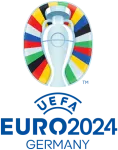 Euro Championship
Euro Championship Nations League
Nations League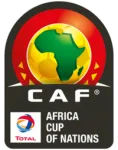 Africa Cup of Nations
Africa Cup of Nations Copa America
Copa America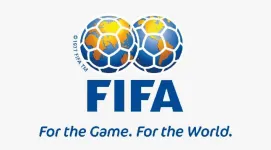 International Friendly
International Friendly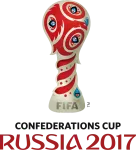 Confederations Cup
Confederations Cup Serie A
Serie A Coppa Italia
Coppa Italia Super Cup
Super Cup Bundesliga
Bundesliga Ligue 1
Ligue 1 DFB Pokal
DFB Pokal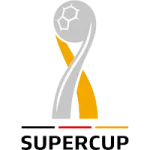 Super Cup
Super Cup Malaysia Super League
Malaysia Super League Coupe de France
Coupe de France Trophée des Champions
Trophée des Champions Pro League
Pro League
- Teams
- TEAMS NAVIGATIONS
 Premier League
Premier League FA Cup
FA Cup League Cup
League Cup La Liga
La Liga Copa del Rey
Copa del Rey Super Cup
Super Cup Champions League
Champions League Europa League
Europa League Europa Conference League
Europa Conference League World Cup
World Cup Euro Championship
Euro Championship Nations League
Nations League Africa Cup of Nations
Africa Cup of Nations Copa America
Copa America International Friendly
International Friendly Confederations Cup
Confederations Cup Serie A
Serie A Coppa Italia
Coppa Italia Super Cup
Super Cup Bundesliga
Bundesliga Ligue 1
Ligue 1 DFB Pokal
DFB Pokal Super Cup
Super Cup Malaysia Super League
Malaysia Super League Coupe de France
Coupe de France Trophée des Champions
Trophée des Champions Pro League
Pro League
- Fixtures & Results
- Fixtures & Results NAVIGATIONS
 Premier League
Premier League FA Cup
FA Cup League Cup
League Cup La Liga
La Liga Copa del Rey
Copa del Rey Super Cup
Super Cup Champions League
Champions League Europa League
Europa League Europa Conference League
Europa Conference League World Cup
World Cup Euro Championship
Euro Championship Nations League
Nations League Africa Cup of Nations
Africa Cup of Nations Copa America
Copa America International Friendly
International Friendly Confederations Cup
Confederations Cup Serie A
Serie A Coppa Italia
Coppa Italia Super Cup
Super Cup Bundesliga
Bundesliga Ligue 1
Ligue 1 DFB Pokal
DFB Pokal Super Cup
Super Cup Malaysia Super League
Malaysia Super League Coupe de France
Coupe de France Trophée des Champions
Trophée des Champions Pro League
Pro League
- Tables
- Tables NAVIGATIONS
 Premier League
Premier League FA Cup
FA Cup League Cup
League Cup La Liga
La Liga Copa del Rey
Copa del Rey Super Cup
Super Cup Champions League
Champions League Europa League
Europa League Europa Conference League
Europa Conference League World Cup
World Cup Euro Championship
Euro Championship Nations League
Nations League Africa Cup of Nations
Africa Cup of Nations Copa America
Copa America International Friendly
International Friendly Confederations Cup
Confederations Cup Serie A
Serie A Coppa Italia
Coppa Italia Super Cup
Super Cup Bundesliga
Bundesliga Ligue 1
Ligue 1 DFB Pokal
DFB Pokal Super Cup
Super Cup Malaysia Super League
Malaysia Super League Coupe de France
Coupe de France Trophée des Champions
Trophée des Champions Pro League
Pro League
- News
- News NAVIGATIONS
 Premier League
Premier League FA Cup
FA Cup League Cup
League Cup La Liga
La Liga Copa del Rey
Copa del Rey Super Cup
Super Cup Champions League
Champions League Europa League
Europa League Europa Conference League
Europa Conference League World Cup
World Cup Euro Championship
Euro Championship Nations League
Nations League Africa Cup of Nations
Africa Cup of Nations Copa America
Copa America International Friendly
International Friendly Confederations Cup
Confederations Cup Serie A
Serie A Coppa Italia
Coppa Italia Super Cup
Super Cup Bundesliga
Bundesliga Ligue 1
Ligue 1 DFB Pokal
DFB Pokal Super Cup
Super Cup Malaysia Super League
Malaysia Super League Coupe de France
Coupe de France Trophée des Champions
Trophée des Champions Pro League
Pro League
- Live ScoresLive
Slovakia
Slovakia| Country | : | Slovakia |
| League | : | |
| Founded | : | 1993 |
| Venue | : | Košická futbalová aréna |
| Coach | : | Jan Kozak (Slovakia) |
Venue
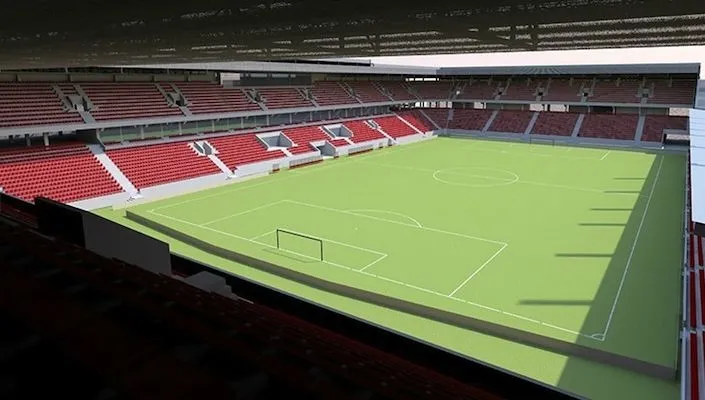
Košická futbalová aréna
| City | : | Košice |
| Capacity | : | 12,658 |
| Surface | : | Grass |
The Slovakia national football team, known for their grit and determination, represents Slovakia in international football competitions. The team has emerged as a competitive force in European football since its formation, following the split of Czechoslovakia into two independent countries in 1993. Slovakia’s footballing history is marked by their passionate fanbase, strong performances in major tournaments, and the presence of legendary players.
History of Slovakia National Football Team
Before 1993, Slovakia was part of Czechoslovakia, which had a rich football history and was a significant player in European and world football. After the dissolution of Czechoslovakia, the Slovakia national football team was formed. The Slovakian national team quickly made its mark in European football and began participating in qualifiers for the FIFA World Cup and UEFA European Championship.
Slovakia’s first major success came in 2010 when they qualified for the FIFA World Cup for the first time as an independent nation. This marked the beginning of Slovakia’s emergence as a competitive side on the global football stage.
Match Predictions
- Burnley vs. Chelsea Predictions & Betting Tips on Nov 22 - 20:30 PM
- Bournemouth vs. West Ham Predictions & Betting Tips on Nov 22 - 23:00 PM
- Fulham vs. Sunderland Predictions & Betting Tips on Nov 22 - 23:00 PM
- Wolves vs. Crystal Palace Predictions & Betting Tips on Nov 22 - 23:00 PM
- Liverpool vs. Nottingham Forest Predictions & Betting Tips on Nov 22 - 23:00 PM
Major Achievements
Although Slovakia has only been an independent nation for a relatively short period, the team has had some notable achievements in international football.
- FIFA World Cup: Slovakia’s most significant achievement came in 2010 when they qualified for the FIFA World Cup in South Africa. They made it to the Round of 16, where they were eliminated by the Netherlands, but their performance in the tournament showcased their potential.
- UEFA European Championship: Slovakia qualified for their first UEFA European Championship in 2016. The team made it to the Round of 16, where they were eliminated by Germany. Their performance in the tournament was widely praised, and it cemented Slovakia's reputation as a strong and emerging footballing nation.
- UEFA Nations League: Slovakia has competed in the UEFA Nations League, where they finished first in their group during the 2018-2019 season, showcasing their improvement and growing confidence in international competitions.
Slovakia’s ability to qualify for major tournaments in a relatively short time highlights their progress and ambition in international football.
Legendary Players of Slovakia
Slovakia has produced several talented footballers who have represented the national team with distinction. Some of the most iconic players in Slovak football history have made an impact not only in Slovakia but also at top clubs across Europe.
- Marek Hamšík: One of Slovakia’s most famous footballers, Hamšík is known for his leadership, technical ability, and vision in midfield. He is Slovakia's all-time top scorer and has had a successful club career, especially with Napoli in Italy's Serie A. Hamšík’s contributions have been instrumental in Slovakia’s success on the international stage.
- Ján Kocian: A skilled midfielder, Kocian was one of the most influential players for Slovakia during the 1990s. He was known for his passing ability and tactical intelligence.
- Robert Vittek: A prolific striker for Slovakia, Vittek was a key figure in the 2010 World Cup campaign, where he scored crucial goals, including a memorable strike against Italy in the group stages.
- Martin Škrtel: A tough and reliable central defender, Škrtel was a key figure for Slovakia’s defense for many years. He earned a reputation for his physicality and leadership, playing at top clubs like Liverpool in the English Premier League.
- Kamil Kopúnek: Kopúnek played an important role in Slovakia’s midfield, particularly during their successful qualifying campaigns for major tournaments. His versatility and ability to contribute both defensively and offensively were key assets to the national team.
These players, among others, have contributed significantly to Slovakia’s footballing success and have become national heroes.
Tactics and Playing Style
Slovakia has built a reputation for being a well-organized and disciplined team. Under various coaches, Slovakia has employed a tactical approach that emphasizes defensive solidity and quick counter-attacks. The Slovakian national team often plays a compact defensive formation and looks to exploit spaces on the break with their quick, skillful players.
In recent years, Slovakia has also incorporated a more attacking style, relying on technical players to create opportunities in the final third. The team’s ability to balance defense and attack has made them a difficult opponent for many top sides in Europe.
Memorable Matches and Rivalries
Slovakia’s football history includes several memorable matches that have shaped their reputation in international football. The most notable match in Slovakia’s history came during the 2010 FIFA World Cup qualifiers when they faced Italy in the group stages. Slovakia achieved a stunning 3-2 victory, knocking the reigning world champions out of the tournament in one of the biggest upsets of the competition.
Another iconic match came in the 2016 UEFA European Championship, when Slovakia faced England in the group stage. Slovakia earned a 0-0 draw, which was a significant result for the team as they advanced to the knockout stages.
Slovakia also shares a historical rivalry with the Czech Republic, as both nations were once part of Czechoslovakia. Matches between the two teams are always highly competitive, as both nations have a strong footballing tradition.
Youth Development and Future Stars
Slovakia’s footballing future looks bright, thanks to the country’s investment in youth development and grassroots football. The Slovak Football Association (SFZ) has been focused on improving the country’s talent pool, with several young players emerging from domestic academies.
- Alexandru Pașcanu: A promising young defender, Pașcanu has made a name for himself with his performances in youth competitions and has the potential to be a future star for Slovakia.
- Róbert Bozeník: A young and talented striker, Bozeník has shown great promise with his performances in the Slovakian league and in international competitions. His speed and finishing ability make him one of Slovakia’s top emerging talents.
- Ondrej Duda: A skilled midfielder, Duda has already established himself as a key player for Slovakia. His technical ability, vision, and leadership on the pitch have earned him a place in the national team.
These players, along with others in the youth ranks, represent the future of Slovak football and are expected to carry the team forward in the coming years.
The Slovak Football Association (SFZ)
The Slovak Football Association (SFZ) is the governing body for football in Slovakia. Founded in 1993, following the country’s independence, the SFZ is responsible for managing the national team and overseeing football development throughout the country. The association has played a key role in the progress of Slovak football, supporting domestic clubs and youth development programs.
Iconic Football Stadiums in Slovakia
Slovakia boasts several impressive football stadiums that have hosted key national team matches. The Tehelné pole in Bratislava is the home stadium of the Slovakia national team. Other important stadiums in the country include the City Arena in Trnava and the Zilina Stadium in Zilina, both of which have been venues for major international matches.
These stadiums provide a passionate atmosphere for Slovakia’s home games, with fans known for their loud and unwavering support of the national team.
Conclusion
The Slovakia national football team may not have the long-standing history of some of Europe’s more established footballing nations, but the team has earned respect and recognition for its achievements in recent decades. With legendary players like Marek Hamšík and Martin Škrtel and an exciting crop of emerging talent, Slovakia’s future in international football looks promising. The team’s disciplined style, combined with their attacking potential, makes them a dangerous opponent for any side in Europe. Slovakia continues to aim for success on the global football stage, and their passionate fanbase will always support them.
News & Updates


